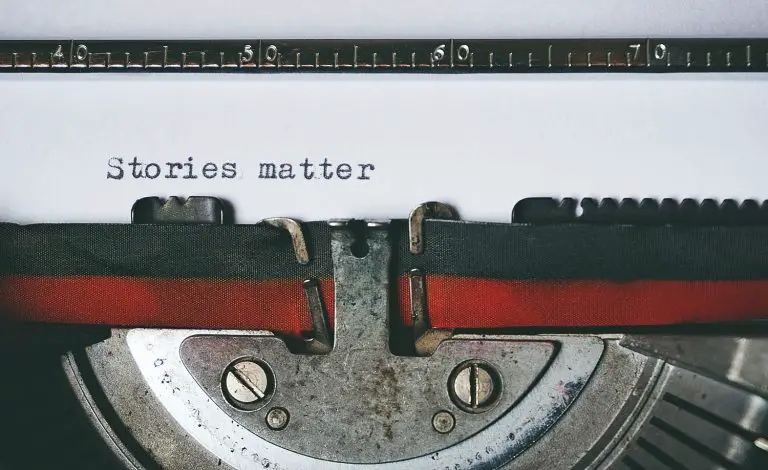Reading & Use of English Part 2
On teacherphill.com I try to give you quality information about Cambridge B2 First as well as other tips to improve your English. In this article you are going to learn everything you need to know about Reading & Use of English Part 2, but if you would like to read some general information about the FCE exam or the Reading & Use of English paper, be my guest.
The other six parts deserve their own posts so I put hours into writing a series for you where I put together my years of experience preparing candidates for FCE to share it here. You can check out the other articles by clicking on the colourful buttons below:
What do you have to do in part 2?
Open cloze (A cloze is a text with gaps). In this part you have to fill in eight gaps in a text, but you don’t get any options. You decide what the missing word must be. This part focusses on grammar and some vocabulary. Here is an example for you:

At the very top there is always an example for you. The example is the gap in the text with number 0. A lot of students get confused because they try to put the first answer in gap 0. Ignore that and start with number 9. I have seen many people getting zero marks because they made this tiny but terrible mistake.
Reading & Use of English Part 2 tests your grammar as well as your vocabulary. It is part of the Use of English portion of the exam together with parts 3 and 4. As it is essential for you to know how this exam paper works and is structured, I recommend reading about it in this article.
The 3 most difficult things about this part?
In the seven parts of Reading & Use of English there are different problems that candidates experience and I explain them a little bit more below. Continue to read the Tips & strategies section to find out about the best solutions.
1. Candidates don’t know hot to do the task
This problem is really nothing that I can do much about, but it is your responsibility to be ready for the exam. Some candidates try to put phrases or even whole sentences in the gaps when you just need one word in each space. So, study before you walk into the exam, plan for each task and remind yourself of the requirements on the day of the exam.
2. Candidates don’t know enough grammar or vocabulary
This is more or less the same problem as in 1). You have to study your grammar and vocabulary before taking the exam. This is nothing any teacher can do for you, so start early and lay the foundation for a successful test because you only have three parts in Reading & Use of English (parts 2, 3 and 4). You have to collect high marks in all three if you want to pass.
3. Candidates have problems with time management
With only 75 minutes to complete all seven parts Reading & Use of English makes everyone sweat a little bit. Again, a good strategy and planning are at least half or your success. Don’t be lazy, put your backside in front of your desk and start working on it.
Tips & strategies
If you have read the previous section (I really hope you have), it became clear to you that preparation is key to a successful exam. Study early what each part requires from you, what aspects of the English language are tested and what the best strategies are. Luckily, you’ve come to the best place. On teacherphill.com I want to help you get ready for battle.
My general advice is to read as much as you can in preparation for the exam. Reading works so well when you try to improve. 5-10 minutes a day of active exercise can do wonders for your language development so don’t wait and grab a book or magazine, read the news daily or check out a blog about your favourite topic. Whatever you enjoy reading is the right thing to read. However, in order to get the greatest benefit possible you should always give yourself a little exercise to do. Highlight 5-10 new words or expressions and look them up in a good online English dictionary or grammar book like English Grammar in Use (check it out on Amazon). After a while you will see nice results.
For more specific advice let’s start with making a plan. Cambridge B2 First is an exam that always looks the same, only the content changes. That’s great news for you because you can take care of everything else beforehand so when the time comes you can fully focus on the content. My recommendation for Reading & Use of English Part 2 looks something like this:
- Read the title and text quickly (optional)
- Look at the sentences and analyse the gaps
- Decide what word fits the gap
- Read the text again
This is the short version, but keep reading below for more details and examples on each step.
1. Read the title and text quickly (optional)
The first step is something I suggest to everyone, but some students are more confident or more advanced in their reading skills or feel comfortable with grammar and vocabulary. If you belong to this group, you can start with the next step, but I think that most people benefit from reading the text QUICKLY to get a general overview. Cambridge usually chooses pretty strange topics for their texts and if you don’t know what it is about, thinking about the grammar might become an even bigger challenge.

Do you know anything about motorbike stunt riders? I didn’t think so…neither do I. Find out what you are dealing with first and then tackle the task.
2. Look at the sentences and analyse the gaps
Before we any questions we need to check the sentences and gaps very carefully. The main challenge in part 2 is to find the missing grammar piece to make the sentence correct and meaningful. So, have a look at the information that is already there, draw the right conclusions and then go to the next step. Let’s look at the example from before about motorbike stunt riders:

Once again, don’t worry about gap 0 because it’s the example. Start with number 9. In this sentence there are two ideas (“The Le Mans race track in France was” and “I first saw…”), but they aren’t logically connected. It looks as if the second half describes what happened at the race track so we need a word that establishes this connection between a place and the description of that place. Think about it and then go to the next part to check.
This step is more important than the others because there is always just one correct word for each gap. Spend an extra minute on your analysis as the correct answer usually comes to mind very easily if you do it the right way.
3. Decide what word fits the gap
Now it is time to collect marks. As I said above, with a good idea about the grammar and meaning of the sentence you should be able to find the missing word quite quickly.
In our example we found that we need to connect the two ideas of a place and some detail that describes it. I’m sure that by now you’ve figured out that ‘where’ is the missing relative pronoun.
4. Read the text again
After you finish the last gap read the text one last time to see if everything makes sense together or if you might want to change an answer or two. This is your safety net as you spend your time on this task thinking about tiny details and we sometimes forget the meaning of the whole text. Don’t skip this part – it can save you a mark or two.
Other tips
Most candidates don’t think enough about their time management or the best sequence of the parts in Reading & Use of English even though both of those things are really important if you want to pass. Make sure you find out more in my article on the topic to be on the safe side. Always remember to be ready when you go into the exam.
Another important thing to consider is that you should always answer all the questions on the answer sheet even if you are not 100% sure. You won’t get punished for giving wrong answers so guess and hope to get a couple of extra marks.
Last but not least, spelling is super important in Reading & Use of English and your answer will be marked incorrect if you misspell. Therefore, double check and avoid missing out on valuable marks!
What about the other parts?
I hope you find the information in this article helpful. If you want to find out more about the other parts, you can click the buttons below.
Lots of love,
Teacher Phill 🙂















Thanks for sharing your info. I really appreciate your efforts and I am waiting for your further post thank youonce again.